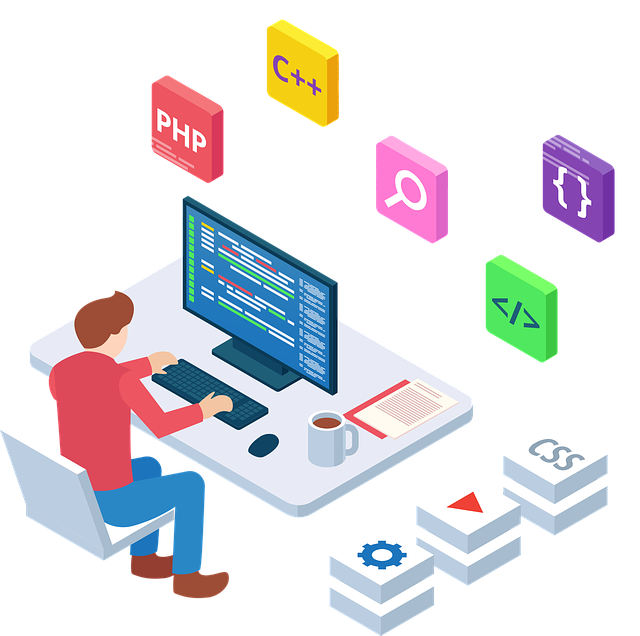8 Beginner’s Guide to Mobile App Development, Startup Cost, Product Costing and Finding Clients

Introduction: In today’s digital age, mobile applications have become an integral part of our daily lives, offering convenience, entertainment, and solutions to various needs. With the increasing demand for mobile apps, many aspiring entrepreneurs and developers are eager to venture into the world of app development. This beginner’s guide provides essential steps and considerations for those embarking on their journey into mobile app development.


Page Contents
A Beginner’s Guide to Mobile App Development, Startup Cost and Product Costing
- Define Your App Idea: Before diving into development, clearly define your app idea and its purpose. Identify the problem your app will solve or the value it will provide to users. Conduct market research to assess the demand for your app idea and analyze competitors to identify unique selling points.
- Choose the Right Platform: Decide whether you want to develop your app for iOS, Android, or both platforms. Consider factors such as target audience, market share, and budget when choosing the platform(s) for your app. You can opt for native app development, which offers better performance and user experience, or cross-platform development for broader reach with shared codebase.
- Learn App Development Basics: Familiarize yourself with the fundamentals of app development, including programming languages (e.g., Swift for iOS, Java/Kotlin for Android), app architecture, user interface design, and database management. Online tutorials, courses, and coding bootcamps are excellent resources for beginners to learn app development skills.
- Select Development Tools and Frameworks: Choose the right development tools and frameworks based on your chosen platform(s) and programming language. Popular tools and frameworks for mobile app development include Xcode and SwiftUI for iOS, Android Studio and Kotlin/Java for Android, and cross-platform frameworks like React Native, Flutter, or Xamarin.
- Design Your App’s User Interface (UI): Create wireframes and mockups to visualize the layout and navigation of your app. Pay attention to user experience (UX) principles, such as intuitive navigation, responsive design, and accessibility. Use design tools like Adobe XD, Sketch, or Figma to design your app’s UI and create a visually appealing and user-friendly interface.
- Develop and Test Your App: Start developing your app by writing code and implementing features according to your app design and functionality requirements. Test your app regularly during development to identify and fix bugs, usability issues, and performance bottlenecks. Embrace agile development practices and iterate on your app based on user feedback and testing results.
- Publish Your App: Once your app is developed and thoroughly tested, prepare it for release on the respective app stores (Apple App Store for iOS, Google Play Store for Android). Follow the app store guidelines and submission requirements, including app store registration, app metadata, screenshots, and app store optimization (ASO) techniques to maximize visibility and downloads.
- Market and Promote Your App: Develop a marketing strategy to promote your app and attract users. Utilize digital marketing channels such as social media, email marketing, content marketing, and app store optimization (ASO) to reach your target audience. Encourage user reviews and ratings, engage with your app’s community, and continuously monitor and optimize your app’s performance and user acquisition strategies.

Here’s a breakdown of the costs associated with starting a mobile app development business:
| Cost Category | Description | Cost Range ($) |
|---|---|---|
| Education and Training | Courses, tutorials, books, or coding bootcamps to learn app development fundamentals and programming languages. | $0 – $5,000 |
| Development Tools | Software and tools required for app development, such as integrated development environments (IDEs), code editors, and version control systems. | $0 – $500 |
| Platform Fees | App store registration fees for publishing apps on platforms like the Apple App Store and Google Play Store. | $25 – $100 (per year) |
| Design Software | Design tools and software for creating wireframes, mockups, and UI/UX design, such as Adobe XD, Sketch, Figma, or InVision. | $0 – $100/month |
| Development Hardware | Hardware equipment such as computers, laptops, smartphones, or tablets for app development, testing, and debugging. | $500 – $2,000 |
| Developer Accounts | Developer program memberships and accounts for accessing developer resources, APIs, and app distribution platforms. | $0 – $300 (per year) |
| Marketing and Promotion | Budget for marketing and promoting your app, including digital marketing, advertising, app store optimization (ASO), and user acquisition campaigns. | $500 – $5,000 |
| Legal and Licensing Fees | Legal expenses for business registration, trademarks, copyrights, privacy policies, and terms of service agreements. | $500 – $2,000 |
| Miscellaneous Expenses | Miscellaneous expenses such as office supplies, internet connection, utilities, and business insurance. | $200 – $1,000 |
| Total Startup Costs | $1,725 – $15,900 |
These cost estimates are approximate and can vary depending on factors such as location, business size, tools and resources chosen, and the complexity of app.

Price Range per Mobile App Development
The price range for selling mobile app development services per app can vary significantly depending on various factors such as complexity, features, platform (iOS, Android, or both), customization, and client requirements. Below is a general price range for selling mobile app development services per app:
- Simple Apps:
- Basic functionality with limited features.
- Price Range: $5,000 – $20,000
- Moderate Complexity Apps:
- Moderate features and functionality.
- Custom UI/UX design.
- Integration with third-party APIs (e.g., payment gateways, social media).
- Price Range: $20,000 – $50,000
- Complex Apps:
- Advanced features and functionality.
- Custom backend development.
- Integration with complex systems or databases.
- High-quality UI/UX design.
- Price Range: $50,000 – $150,000+
- Enterprise-Level Apps:
- Highly complex and feature-rich apps.
- Custom solutions for large-scale organizations.
- Integration with enterprise systems (e.g., ERP, CRM).
- Extensive testing, security, and compliance requirements.
- Price Range: $150,000 – $500,000+
It’s important to note that these price ranges are estimates and can vary based on the specific requirements and scope of each project. Factors such as additional services (e.g., maintenance, support, updates), ongoing development iterations, and client negotiations can also impact the final cost of selling mobile app development services per app. It’s recommended to conduct a thorough assessment of client needs and project requirements to provide accurate pricing estimates.
8 Potential Clients for a Mobile App Development Business
Finding potential clients for a mobile app development business involves a combination of online and offline strategies to reach a diverse audience. Here are some effective ways to gain potential clients:
- Networking Events: Attend industry events, conferences, and meetups related to technology, entrepreneurship, and mobile app development. Network with fellow professionals, startup founders, and potential clients. Exchange business cards, engage in meaningful conversations, and showcase your expertise.
- Online Platforms:
- Freelance Websites: Create profiles on freelance platforms such as Upwork, Freelancer, and Toptal to showcase your skills and bid on app development projects.
- LinkedIn: Utilize LinkedIn to connect with potential clients, join relevant groups, and share insights on mobile app development trends and technologies.
- GitHub: Contribute to open-source projects and showcase your coding skills on GitHub. Participate in discussions and engage with the developer community to build your reputation.
- Social Media:
- Twitter: Follow industry influencers, engage in conversations using relevant hashtags (#appdevelopment, #mobileapps), and share valuable content to attract potential clients.
- Facebook Groups: Join Facebook groups dedicated to app development, startups, and technology entrepreneurship. Participate in discussions, share your expertise, and connect with potential clients.
- Instagram: Showcase your portfolio, behind-the-scenes work, and success stories through visually appealing posts and stories. Utilize hashtags to reach a broader audience interested in mobile app development.
- Referrals: Leverage your existing network of clients, colleagues, and friends to generate referrals. Encourage satisfied clients to recommend your services to others. Offer referral incentives such as discounts or free consultations to incentivize referrals.
- Cold Outreach: Identify potential clients through online directories, business listings, and industry databases. Reach out to companies and startups directly via email or LinkedIn with personalized pitches highlighting your expertise and past projects relevant to their needs.
- Content Marketing: Create valuable content such as blog posts, case studies, whitepapers, and tutorials related to mobile app development. Publish content on your website, Medium, or industry publications to demonstrate your knowledge and attract inbound leads through search engines and social media.
- Partnerships and Collaborations: Collaborate with marketing agencies, design studios, and software development firms that complement your services. Partnering with complementary businesses can help you expand your reach and gain access to their client base.
- Local Networking: Attend local business networking events, chamber of commerce meetings, and startup incubators in your area. Build relationships with local businesses, entrepreneurs, and potential clients who may need mobile app development services.
By implementing a combination of these strategies and consistently promoting your services, you can effectively gain potential clients for your mobile app development business and grow your client base over time.
Conclusion
Embarking on the journey of mobile app development can be challenging yet rewarding for beginners. By following this beginner’s guide and leveraging resources, tools, and best practices, aspiring app developers can turn their app ideas into reality and create impactful and successful mobile applications. With dedication, perseverance, and a willingness to learn, you can navigate the complexities of app development and contribute to the thriving mobile app ecosystem.







